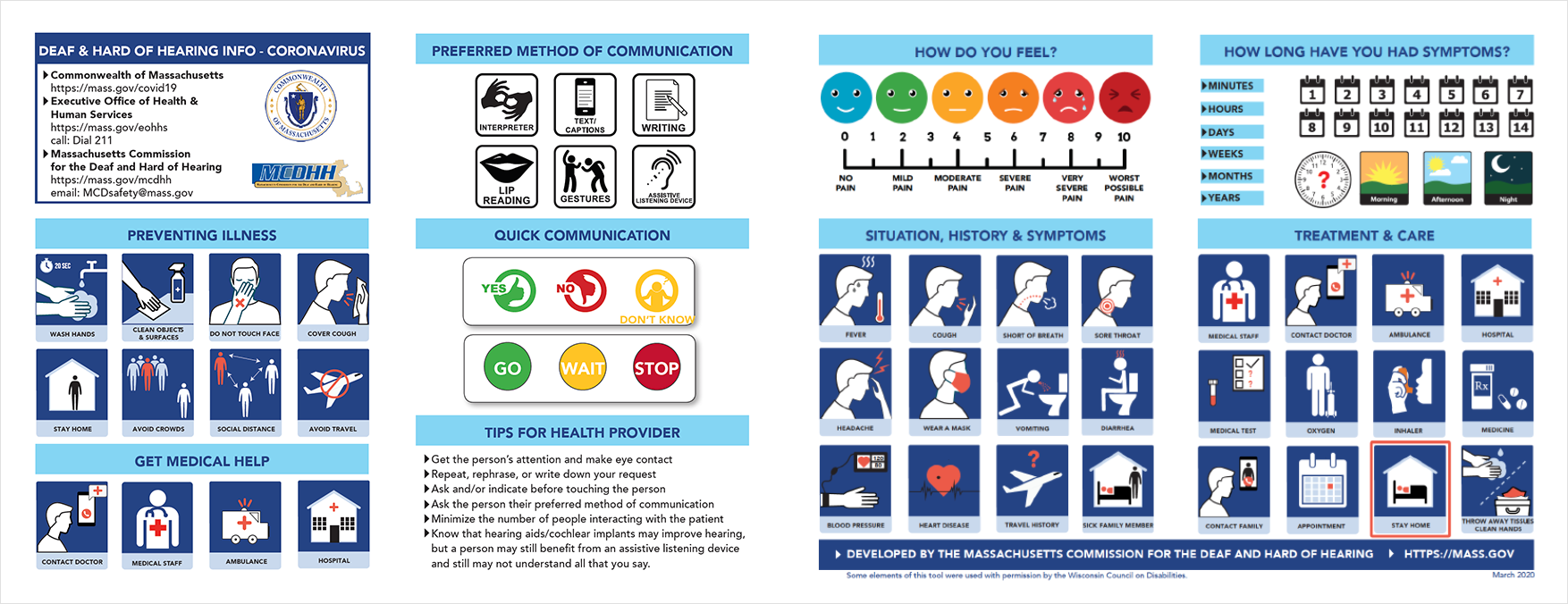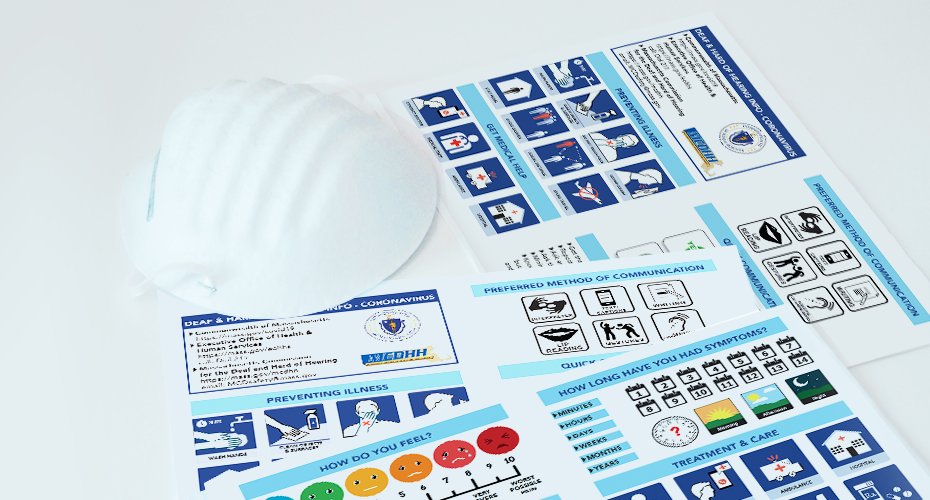Apr 22, 2020
New graphic can aid deaf patients seeking treatment amid outbreak
A state commission has created a simple visual aid for health care facilities to ensure clinicians can communicate effectively with the deaf and hard of hearing about COVID-19, meeting a need for a population of more than 1 million in Massachusetts.
“It is a great tool for a variety of situations,” said Massachusetts Commission for the Deaf and Hard of Hearing Commissioner Steven Florio. “With the coronavirus, more individuals are using masks and personal protective equipment, which make it difficult for people with auditory loss to lip read. Communicating in non-traditional care settings such as drive-through testing sites or diagnostic tents can be overwhelming, but this tool can help.”
The commission, serving 1.3 million deaf and hard of hearing people in the Commonwealth, is dedicated to providing accessible communication, education and advocacy to consumers, and private and public entities.
The graphic uses simple, bright images to communicate COVID-19 symptoms and prevention tips.

Zoe RajBhandary, communication access outreach training specialist, recalls the commission had a win last year with the launch of an visual tool called a “visor card” to assist police officers in traffic stops with deaf and hard of hearing people. It was so well received that when the coronavirus outbreak began, RajBhandary and her colleague Jonathan O’Dell, assistive technology and training specialist, decided to produce a similar tool for EMTs and fire department personnel.
“Zoe and I noticed other cards were focusing on travel-related questions but the situation evolved so rapidly that it became all about community transmission, so we tried to make something more future-proof,“ O’Dell said.
Even with the use of new transparent face masks in some settings, people with hearing loss are struggling to read lips amid the pandemic, members of the deaf community note.
“If deaf people are dependent on lip reading or communicating by watching facial expressions – which is where some of the grammar is in American sign language – pulling down a mask may put them at risk,” said Shaun Levine, an investment analyst at Blue Cross Blue Shield of Massachusetts. “Not being able to clearly see what is being articulated may not allow them to communicate effectively and result in frustration and a possible delay in care. A tool like this is really important and useful, especially during the pandemic.”
“The COVID-19 card is a wonderful introduction for a deaf person and medical personnel to have a very high-level exchange that would allow them to be triaged,” agreed Blue Cross Blue Shield of Massachusetts sign language interpreter Jolanta Galloway.
Lowell General Hospital and Steward Health System have begun using the graphic and have made copies available at the check-in and nurses’ stations, Florio said.
“We’ve also been talking to other states and their state agencies have contacted me about using the tool,” he said.
The graphic can also be easily saved on a phone, O’Dell noted.
“Nowadays, everyone has a smartphone with screens large enough that people could pinch in, show the pictures and communicate through the card. This is also a way of using a low tech version of the card, save it onto a mobile device and not have to carry a paper-version, expanding its use capacity,“ he said.
And it can be used with a wide population.
“The tool is great for not only the deaf and hard of hearing,” Florio said. “There are different spectrums of hearing loss as well as people having difficulty communicating due to the illness itself. Also, children, adults and seniors that speak a different language can benefit from this communication tool.”
Did you find this article informative?
All Coverage content can be reprinted for free.
Read more here.

